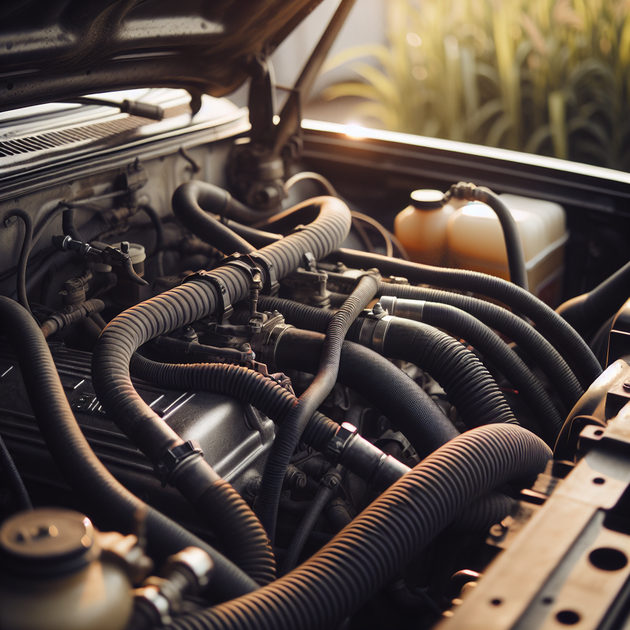Ever popped the hood on a truck and found a couple of hoses just hanging there, not connected to anything? It’s enough to make anyone scratch their head—especially when the heat and AC aren’t working. If you’re dealing with this on a 2001 F-150, you’re definitely not alone. Here’s what’s really going on with those hoses and what you can do about it.
Why Are There Hoses Sticking Out of My 2001 F-150?
When it comes to the 2001 F-150, a couple of loose hoses under the hood are almost always part of the heating and cooling system—specifically, the heater core hoses. These rubber lines run coolant from your engine to a small radiator (the heater core) tucked behind the dash. When working right, hot coolant flows through the core, and your blower pushes air over it, giving you heat inside the cab.
If these hoses are dangling and your buddy isn’t getting any heat or AC, chances are the heater core has been bypassed or removed. This is a common “quick fix” if the heater core starts leaking—rather than replace it (which can be labor-intensive), some folks just loop the hoses together so coolant bypasses the core entirely.
No Heat or AC? Here’s What Those Hoses Tell You
No heat in an older truck is annoying but not surprising if those hoses aren’t connected. But why is the AC also out? In most cases:
– The lack of heat is because coolant isn’t flowing through the heater core.
– The lack of AC could mean other issues in the climate system, like electrical problems or missing parts.
– Sometimes, if work was done behind the dash, wires or vacuum lines for both heating and cooling controls were disturbed.
Here’s a breakdown of what might be missing if you spot those loose hoses:
- Heater Core: If bypassed or removed, no heat will come from your vents.
- Blower Controls: Disconnected wiring/vacuum lines can kill both heat and AC controls.
- AC System: Separate from heater core but shares dashboard controls; may be affected during repairs.
Still not sure what each hose does? There’s a great overview on Family Handyman that shows how heater cores fit into your vehicle’s system.
What Should You Do About Those Hoses?
Plugging them back in isn’t as simple as “just hooking them up.” Here’s why:
– If your heater core was leaking and has been bypassed, connecting those hoses will only send coolant into your cab—and possibly onto your feet!
– If you want heat again, you’ll need to replace (or reinstall) a working heater core.
– For AC issues, check fuses, relays, and refrigerant levels—but remember that dashboard controls can be affected by disconnected components.
So before you start plugging things in, it helps to know exactly what’s been changed under your hood. If in doubt, consult a repair manual like Haynes for diagrams and step-by-step guides.
How to Fix Your 2001 F-150: Step by Step
If you want your climate system back to normal, here’s how to approach it:
- Inspect both hoses. Are they capped off or looped together?
- Check under the dash. Look for signs that the heater core has been removed or bypassed.
- If missing: Order a replacement heater core and plan for several hours of labor (it’s a big job).
- If present but disconnected: Reconnect hoses carefully and check for leaks.
- For AC issues: Check fuses first, then inspect wiring behind dash for anything left unplugged during previous repairs.
Here’s a personal story: A friend snagged an old F-150 cheap at auction. The seller mentioned “no heat,” but he didn’t realize both heater hoses were zip-tied off near the firewall. Sure enough, someone had bypassed a leaky heater core years ago. He ended up swapping in a new one after freezing through his first winter—lesson learned!
If you’re on the fence about tackling this repair yourself versus taking it to a pro, weigh your comfort level with dashboard disassembly. Heater cores aren’t expensive parts (AutoZone) but getting to them can test anyone’s patience.
Wrapping Up: Is It Worth Fixing Those Hoses?
Loose hoses on your 2001 F-150 usually mean someone tried to avoid fixing a leaky heater core—and skipped restoring full climate control. Fixing it means swapping in a new core and reconnecting everything properly—not just plugging random hoses back in.
So what would you do—bundle up all winter or take on the repair for year-round comfort?

Leave a Reply